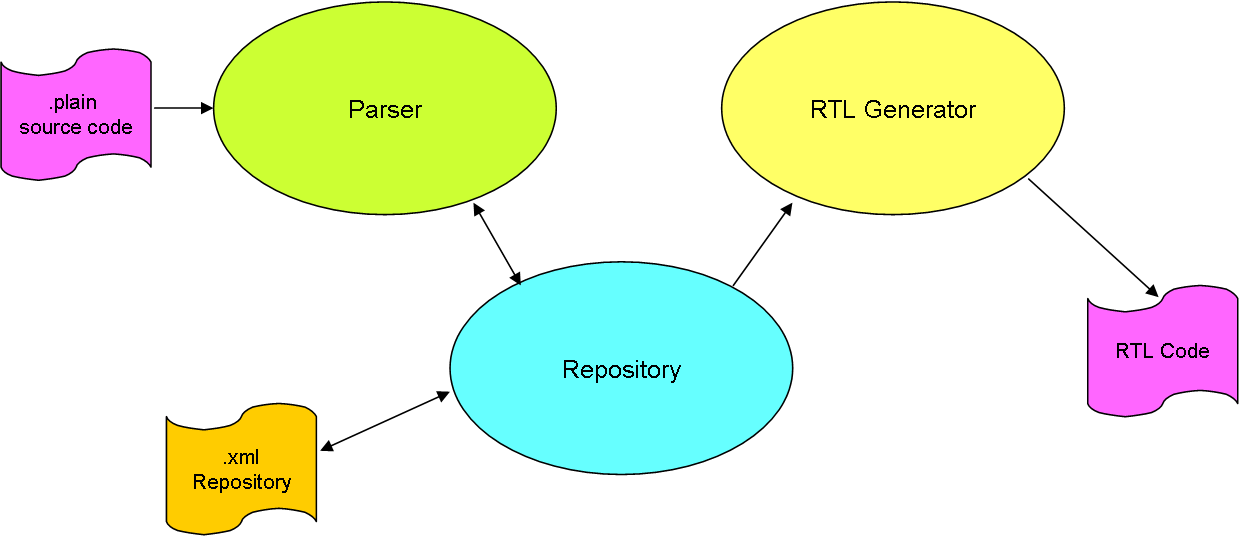The Assembler itself will read Plain source code and generate a RTL file that is downloaded to the device. RTL (Real Time Linker) is located on the target device and will convert RTL format to executable Plain VM instructions.
Most modern Assemblers are very similar to Compilers. The main difference is that the Assembler have a syntax that is close to the native assembly or in this case VM instructions. That said Plain is actually a high level language, so the technique used is a classic Descent Recursive Parser assisted by tables.
Any Assembler (or Compiler) will consist of 3 components; a Parser, a Repository and a Code Generator. The Parser read Plain code and convert it to a repository (database) over the code. Once done it call the code generator that in this case generate RTL Code. One of the differences with Plain is that the Repository is exposed and can be imported and exported as well as accessed through other applications.
The Repository need a XML repository file that define the target platform and available libraries/modules on that platform. This together with the Plain source code form the final applications.
While the assembler “PASM” is one application we will also have several other command line utilities and file formats. One is the output reports from the repository that can be used for IDE integration or libraries. Another is the download utility, but I will return to those in due time.
Plain has been a long coming system since I needed to create HW supporting Plain, FW supporting Plain, VM Engine, RTL as well as the assembler itself. It will still be on-going for a while, but I am not that far off demonstrating the first Plain applications.
